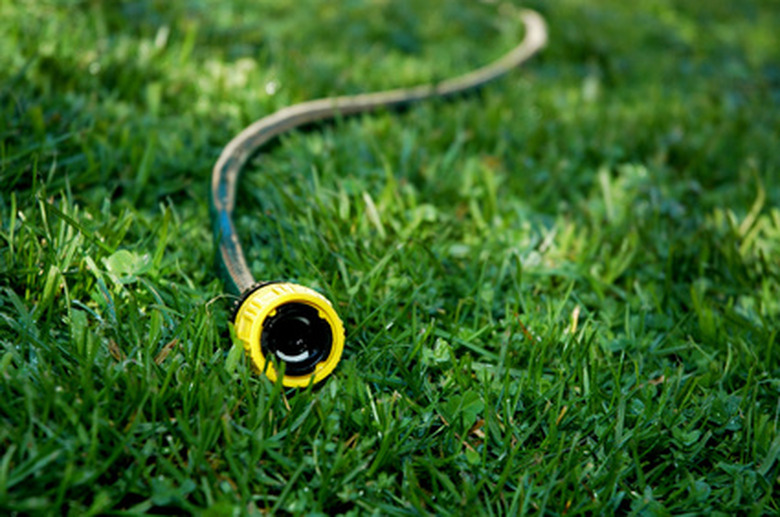About Watering The Lawn After Mowing
Both mowing and watering are key to maintaining a healthy and green lawn. Without enough water, a lawn will turn brown and go dormant during the summer. Watering a lawn too often wastes water and can interfere with your mowing if the grass stays too damp or grows too thick. When to water and when to mow is a question many homeowners ask. Following a few basic guidelines can keep your lawn healthy and green.
Lawn Height
Ideally, lawns should not be cut shorter than 2 inches. If your lawn is cut shorter than 2 inches you decrease its ability to tolerate drought and extreme heat. Short lawns also do not hold water as well as lawns left slightly longer. Lawns shorter than 2 inches will require more watering to try to compensate for the stress of the harsh cutting. Keep your lawn at 2 inches or a little taller, and your watering will have the most impact. Water after you mow, so as not to water grass that is going to be cut.
- Both mowing and watering are key to maintaining a healthy and green lawn.
- Without enough water, a lawn will turn brown and go dormant during the summer.
Water Depth
After you mow, you should water. Of course, you may have to water between mowings as well. The key to watering lawns is to water deeply, but infrequently. Grass prefers to receive 1 to 1/2 inches of water at a time. This encourages root growth and allows the grass to store water. Watering deeply and infrequently also conserves water as you eliminate unnecessary and quick waterings.
Watering Time
You may find that ideal watering and mowing times conflict with one another. To mow you need the grass to be dry, which often means waiting until midday or early afternoon when the day is at its warmest. Lawns should be watered, however, in the early morning whenever possible. This minimizes the loss of water to evaporation from the day's heat, and allows the grass blades to dry gradually during the day. A good mowing and watering schedule may mean mowing in the late afternoon and then watering early the following morning.
- After you mow, you should water.
- The key to watering lawns is to water deeply, but infrequently.
Watering System
In-ground irrigation systems are the most efficient for watering lawns. They allow the least amount of water loss due to evaporation and drift. Irrigation systems can be set to a timer and programmed to come on at specific times on specific days. Try to coordinate your mowing with your preset watering schedule so that your lawn will receive water after you have mowed.
Stress Test
One way to judge if your lawn needs water is to watch for footprints. If the blades of grass bounce back right away after they have been walked on you don't need to water. If they do not, and footprints remain in the lawn, it needs water. As you mow you can assess the watering needs of the lawn by watching for your own footsteps.
- In-ground irrigation systems are the most efficient for watering lawns.
- As you mow you can assess the watering needs of the lawn by watching for your own footsteps.
